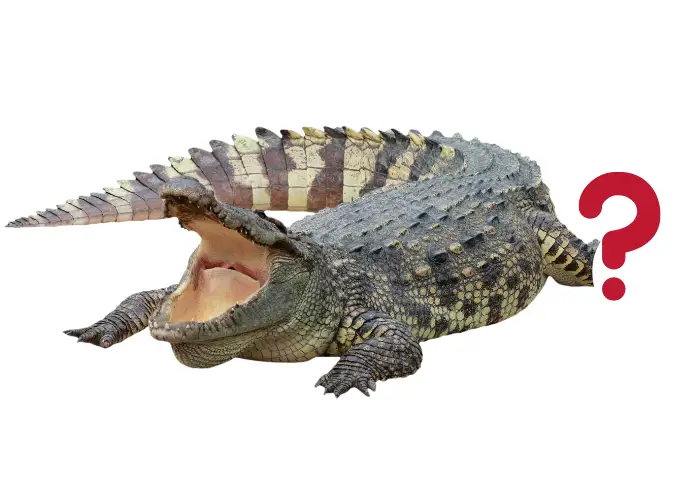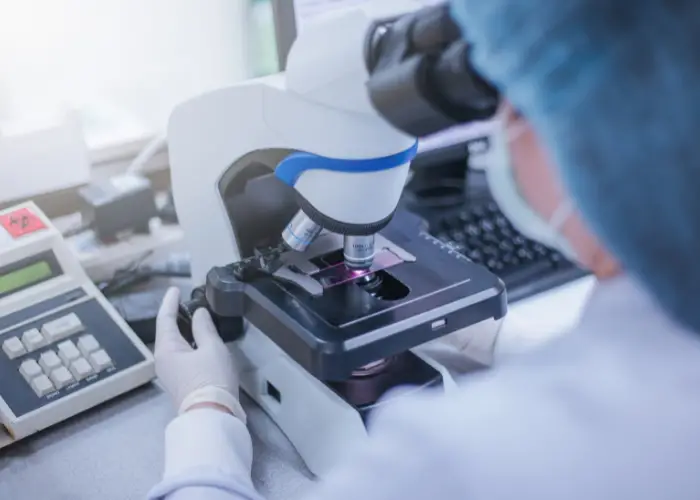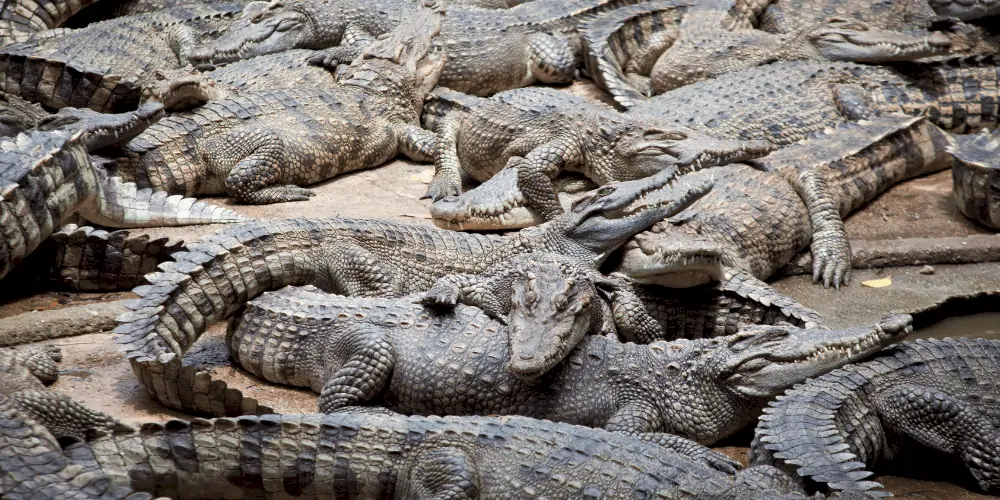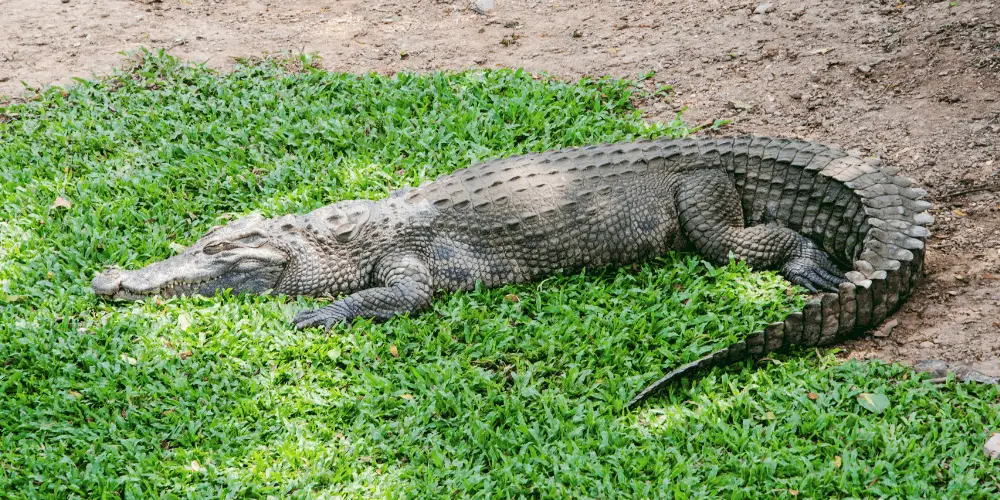Crocodiles are fascinating creatures in the animal kingdom. These ancient reptiles have adapted to various environments, from swamps and rivers to coastlines and open seas. Crocodiles are known for their incredible strength, stealth, and survival skills, but can they regrow limbs?
Crocodiles cannot regrow limbs, unlike other animals with regenerative abilities. When a crocodile loses a limb due to injury or predation, the wound typically heals over time, resulting in a scar or stump.
Let’s dive deep into reptilian regeneration and explore its implications on crocodile biology.
The Science of Regeneration: A Quick Overview

Regeneration is how animals can regrow or replace lost or damaged body parts.
Some animals, like starfish, can regrow entire limbs, while others, like humans, can only regenerate a limited amount of tissue, such as skin and liver cells.
Regeneration in Reptiles: A Mixed Bag
Reptiles, as a group, have varying abilities in regeneration.
Some reptiles, like certain lizards, can regenerate their tails when threatened or injured, a phenomenon known as autotomy.
On the other hand, snakes cannot regrow their tails but can regenerate their skin during shedding.
This begs the question: where do crocodiles fit in the spectrum of reptilian regeneration?
Crocodile Regeneration: What We Know So Far

The answer is not as straightforward as one might hope regarding crocodile limb regeneration.
While there have been anecdotal reports of crocodiles regrowing small portions of their limbs or tails, there is limited scientific evidence to back these claims.
However, crocodiles are known to have some regenerative abilities.
For example, they can regrow their teeth throughout their lives, replacing each tooth up to 50 times!
Recent research has revealed that crocodiles can heal wounds, even when large or infected.
This wound-healing capacity is thought to be related to their immune system, which can produce potent antimicrobial compounds to prevent infections.
The Potential of Crocodile Limb Regeneration: A Future Possibility?

While the current evidence suggests that crocodiles cannot regrow entire limbs, there is always the possibility that future research could uncover new information.
Scientists are actively studying the regenerative abilities of various animals in the hope of unlocking the secrets to tissue regeneration.
One example is the axolotl, a type of salamander that can regenerate its limbs, tail, heart, and even parts of its brain.
By understanding the molecular mechanisms that allow the axolotl to regenerate, researchers hope to develop therapies to help humans regenerate lost or damaged tissue.
Could a similar approach be applied to crocodiles in the future?
It’s certainly possible as more research is conducted into the wound-healing abilities of these remarkable reptiles.
The Significance of Crocodile Regeneration Research

Studying the regenerative abilities of crocodiles and other reptiles has several important implications.
Firstly, a better understanding of reptilian regeneration could advance human medical treatments.
By unlocking the secrets of tissue regeneration, researchers may develop therapies that help people recover from injuries, burns, or degenerative diseases.
Secondly, studying crocodile regeneration can help scientists understand the evolutionary history of this trait.
By comparing the regenerative abilities of different reptile species, researchers can piece together the evolutionary puzzle and shed light on regeneration development across the animal kingdom.
Lastly, crocodile regeneration research can contribute to wildlife conservation efforts.
Understanding the limits and potential of crocodile regeneration can inform strategies to protect these fascinating animals and their habitats.
Lessons from Nature: The Power of Regeneration

The natural world offers countless examples of resilience and regeneration, and crocodiles are no exception.
Despite their inability to regrow limbs, these ancient reptiles have evolved various strategies to survive and thrive in their environments.
Their remarkable wound-healing abilities testify to the power of adaptation and resilience.
As we continue to study the regenerative capacities of crocodiles and other species, we can learn valuable lessons about the importance of perseverance and adaptability in the face of challenges.
A World of Regenerative Possibilities: The Future of Regeneration Research

The field of regenerative medicine is rapidly advancing, driven by the discoveries made through studying the regenerative abilities of various organisms.
As we continue to explore the potential of crocodile regeneration, it’s essential to keep an open mind and embrace the possibilities this research could bring.
From developing novel medical treatments to informing conservation strategies, the study of crocodile regeneration promises to unlock a world of regenerative possibilities.
As we look to the future, we must continue supporting research into the fascinating world of reptilian regeneration. It may hold the key to unlocking new and innovative solutions for some of the most pressing challenges facing humanity and the natural world.
Bridging the Gap: Collaboration Between Disciplines in Regeneration Research
One of the critical factors driving advancements in regeneration research is the collaboration between various scientific disciplines.
From biology and genetics to tissue engineering and bioinformatics, studying regeneration requires a multidisciplinary approach to uncover its underlying mechanisms and potential applications.
By fostering collaboration between researchers from diverse fields, we can accelerate the pace of discovery and translate findings from the lab to real-world solutions.
This cross-disciplinary approach has the potential to transform not only our understanding of crocodile regeneration but also our ability to harness the power of regeneration for the betterment of both human and animal life.
The Role of Technology in Regeneration Research

The rapid development of technology has profoundly impacted the study of regeneration, including our understanding of crocodile regenerative abilities.
Advanced imaging techniques, such as magnetic resonance imaging (MRI) and computed tomography (CT) scans, enable scientists to observe the healing and regrowth processes in unprecedented detail.
In addition to imaging technology, advances in genetic sequencing and gene editing tools, such as CRISPR-Cas9, have allowed researchers to manipulate genes and uncover the genetic factors that contribute to regeneration.
By leveraging cutting-edge technology, scientists can delve deeper into the mysteries of regeneration, paving the way for discoveries and applications in the field.
Engaging the Public: The Importance of Science Communication in Regeneration Research

As we uncover new insights into crocodile regeneration and its implications, we must communicate these findings to the broader public.
Effective science communication can help raise awareness of the significance of regeneration research, inspire future generations of scientists, and foster support for research funding and conservation efforts.
Engaging the public in the exciting world of regeneration research can cultivate a sense of wonder and appreciation for the natural world and its inhabitants, including crocodiles.
Through education and outreach, we can ensure that the knowledge gained from studying crocodile regeneration is preserved, shared, and celebrated.
Final Thoughts:

Based on current scientific evidence, it seems that crocodiles cannot regrow entire limbs.
However, they possess impressive regenerative abilities, such as regrowing teeth and healing large wounds.
While crocodile limb regeneration remains a fascinating question, it’s important to remember that our understanding of this topic is still evolving.
As more research is conducted, we may uncover new insights into the regenerative potential of crocodiles and other reptiles.
Studying crocodile regeneration and its potential applications is not just an academic exercise; it has real-world implications for human medicine, evolutionary biology, and wildlife conservation.
By continuing to explore the mysteries of reptilian regeneration, we can gain valuable knowledge that could benefit both humans and the animal kingdom.
While we may not have definitive answers regarding crocodile limb regeneration, the journey of discovery continues.
Through ongoing research, collaboration, and technological advancements, we are steadily expanding our understanding of the regenerative abilities of crocodiles and other species.
Pursuing knowledge in this fascinating field holds the promise of unlocking new possibilities and applications with the potential to transform human medicine, evolutionary biology, and wildlife conservation.
As we continue to explore the mysteries of crocodile regeneration, we remain committed to pursuing knowledge and applying our findings for the betterment of all life on Earth.
EXPLORE MORE CROCODILE TOPICS BELOW:
- How Long Can a Crocodile Go Without Eating?
- Do Crocodiles Have Tongues? [ Exploring Nature’s Puzzle ]
- Are Crocodiles Lizards or Amphibians?
- Can Crocodiles Feel Pain?
- How Fast Can a Crocodile Run?
- What is a Group of Crocodiles Called?
REFERENCES:
- Scheyer, T. M., Aguilera, O. A., Delfino, M., Fortier, D. C., Carlini, A. A., Sánchez, R., Carrillo-Briceño, J. D., Quiroz, L., & Sánchez-Villagra, M. R. (2013). Crocodylian diversity peak and extinction in the late Cenozoic of the northern Neotropics. Nature Communications, 4, 1907. https://doi.org/10.1038/ncomms2940
- Gilbert, E. A., Delorme, S. L., & Vickaryous, M. K. (2015). The regeneration blastema of lizards: an amniote model for the study of appendage replacement. Regeneration (Oxford, England), 2(2), 45–53. https://doi.org/10.1002/reg2.31
- Jagnandan, K., Russell, A. P., & Higham, T. E. (2014). Tail autotomy and subsequent regeneration alter the mechanics of locomotion in lizards. The Journal of experimental biology, 217(Pt 21), 3891–3897. https://doi.org/10.1242/jeb.110916



